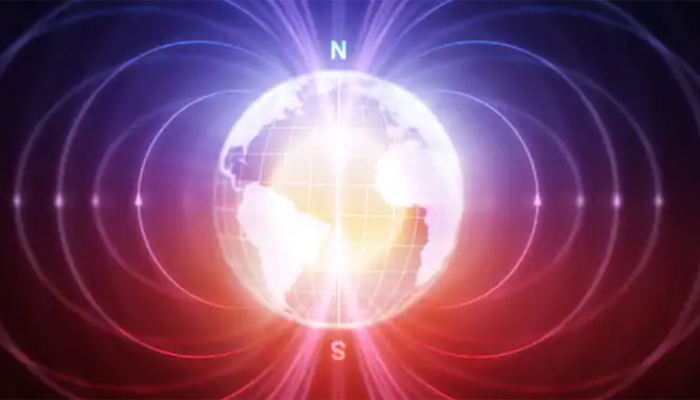Earth's magnetic field can change 10 times faster than earlier thought, finds study
A team of researchers at the University of Leeds and University of California at San Diego have found that changes in the direction of the magnetic field of Earth can hapen 10 times faster than previously thought.
Trending Photos
)
A team of researchers at the University of Leeds and University of California at San Diego have found that changes in the direction of the magnetic field of Earth can hapen 10 times faster than previously thought.
The new study is significant as it provides new insight into the flow of iron 2800 kilometers below the surface of the earth and the infleunce of the movement of iron on the magnetic field during the past hundred thousand years.
It is to be noted that magnetic field of Earth is generated and maintained by a convective flow of molten metal that forms the outer core of Earth. The movement of the the liquid iron creates the electric currents that power the field.
Dr. Chris Davies, associate professor at Leeds and Professor Catherine Constable from the Scripps Institution of Oceanography, UC San Diego, in California adopted a unique method for their study. The researchers combined computer simulations of the field generation process with reconstruction of time variations in magnetic field of the Earth.
The findings of the study were published in Nature Communications.
Dr. Davies, from the School of Earth and Environment, said: "We have very incomplete knowledge of our magnetic field prior to 400 years ago. Since these rapid changes represent some of the more extreme behavior of the liquid core they could give important information about the behavior of Earth's deep interior."
Professor Constable said: "Understanding whether computer simulations of the magnetic field accurately reflect the physical behavior of the geomagnetic field as inferred from geological records can be very challenging.
"But in this case we have been able to show excellent agreement in both the rates of change and general location of the most extreme events across a range of computer simulations. Further study of the evolving dynamics in these simulations offers a useful strategy for documenting how such rapid changes occur and whether they are also found during times of stable magnetic polarity like what we are experiencing today," he added.
Stay informed on all the latest news, real-time breaking news updates, and follow all the important headlines in india news and world News on Zee News.
Live Tv







)
)
)
)
)
)
)
)
)
)
